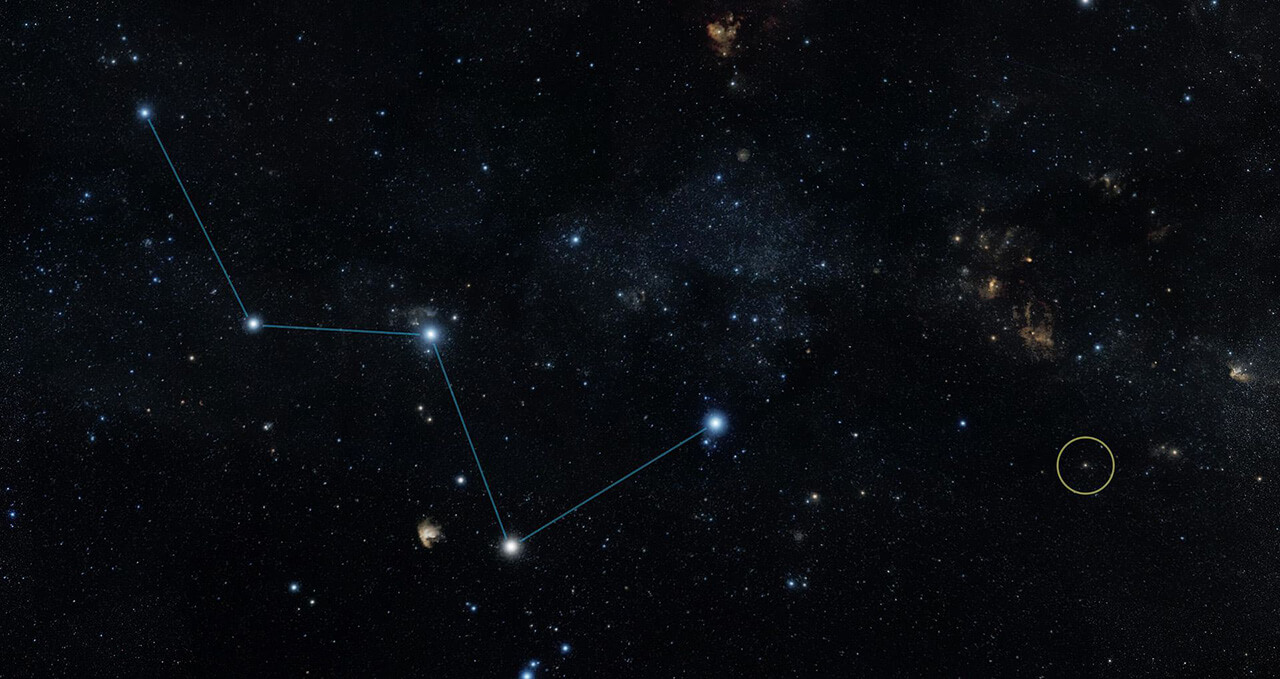At a distance of 21 light years from us in the direction of the constellation Cassiopeia, the exoplanet HD219134 b rotates around its star, the year on which it lasts only three earth days. By mass, this red-hot world is almost 5 times larger than the Earth, and, unlike it, is devoid of a massive iron core, but instead is rich in calcium and aluminum.
HD219134 b may be shimmering red and blue, like rubies and sapphires, because these gems are aluminum oxides that are common on an exoplanet.
-Carolyn Dorn of the University of Zurich (Switzerland), lead author of a study
When studying the formation of planets, astronomers develop theoretical models and compare the results with observations. It is known that at the moments of formation and youth, sun-like stars are surrounded by a disk of gas and dust, in which planets are born, and rocky worlds, such as the Earth, grew during the collision of solid building blocks remaining after the dissipation of gas in the protoplanetary disk.
Typically, these building blocks are formed in regions where elements such as iron, magnesium, and silicon have condensed. As a result, the formed planets have a composition similar to Earth with an iron core, and most of the known super-earths have grown up under similar conditions today.
-Carolyn Dorn
But there are also regions close to the star, where it is much hotter. Most of the elements in them are in gaseous form, and the planetary building blocks have a completely different composition.
Using computer simulations, the researchers calculated what the planet would look like that is forming in such a hot place. They found that calcium and aluminum along with magnesium and silicon are the main components of building blocks, while iron will be almost completely absent.
That is why such worlds cannot have a magnetic field, like that of the Earth, and are inferior in density by 10-20 percent. Because the internal structure is so different, the cooling process and the composition of the primary atmospheres will also be very different from those observed in normal super-earths.
-Carolyn Dorn
To test their findings, the team considered various scenarios that could lead to a lower density of worlds, for example, the presence of a dense atmosphere. They analyzed several of the studied exoplanets that are similar in their properties to HD219134 b and are close to their stars.
Thus, we have found three candidates who belong to a new class of super-earth with an exotic composition. The exoplanet 55 Cancri e in 2012 attributed “the sky in diamonds”, as it was previously believed that it mainly consists of carbon. But with the new data, we will have to abandon this application and reclassify it from diamond to sapphire.
-Carolyn Dorn
The sample included 55 Cancri e and WASP-47 e, rotating around their luminaries so closely that the temperature on their surfaces reaches almost 3000 degrees Celsius and they would have lost any gas envelope long ago. Therefore, firstly, the atmosphere as a reason for the decrease in density in these cases was swept away, and, secondly, they stood in the same ruby-sapphire row with HD219134 b.
Super-earths with a surface made of rubies and sapphires
Click To Tweet
The post Super-earths with a surface made of rubies and sapphires appeared first on Upcosmos.com.
